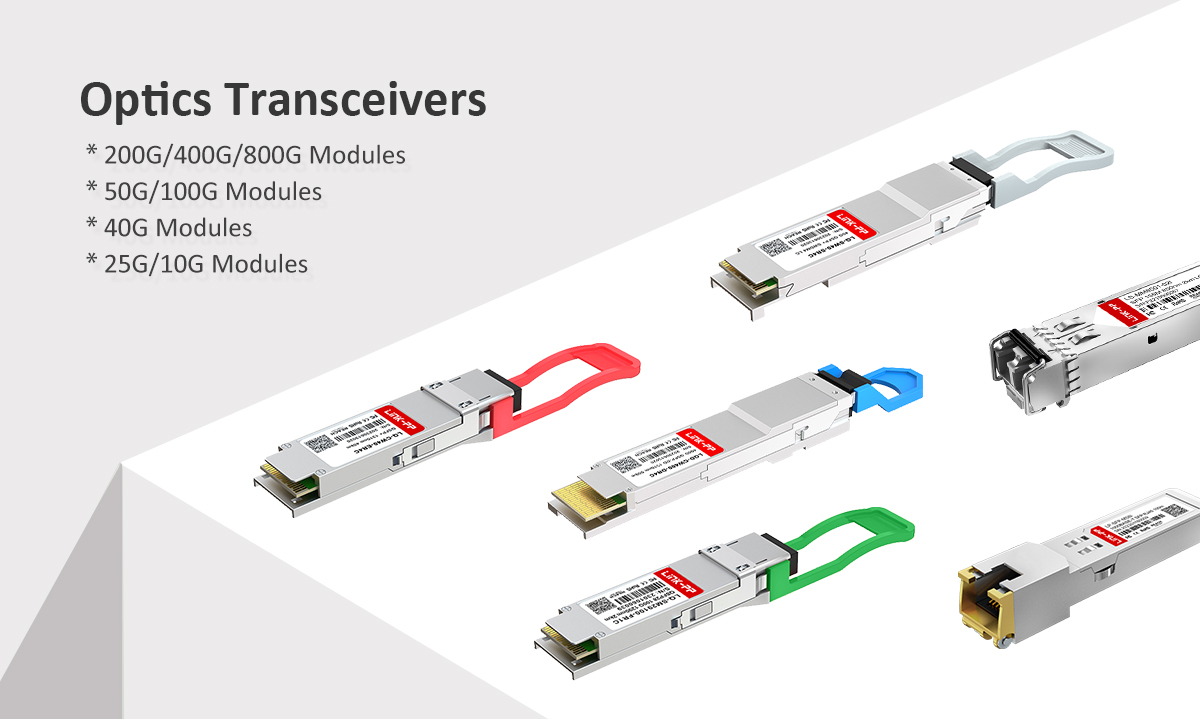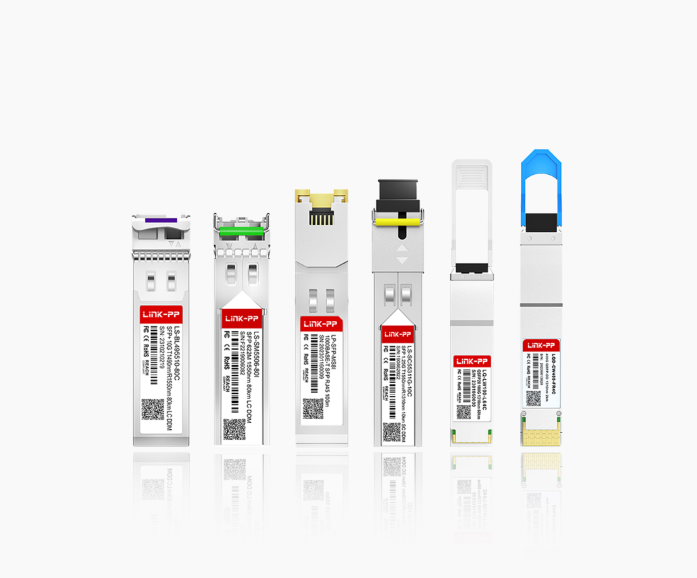
The Data Link Layer (Layer 2 of the OSI model) is the unsung hero of network communication. Acting as the essential bridge between the raw physical transmission of bits and the logical network layer above, it is responsible for node-to-node delivery, frame synchronization, and error control. When this layer is healthy, data flows smoothly. When it's not, you face a cascade of connectivity problems that can be notoriously difficult to diagnose.
In this guide, we will delve into the most common network issues at the Data Link Layer, providing you with the knowledge to identify and resolve them. We'll also explore how physical components, like optical transceivers, play a critical role and how choosing the right hardware, such as LINK-PP's reliable products, can be a game-changer for your network infrastructure stability.
🔧 Understanding the Data Link Layer's Core Functions
Before we jump into the problems, let's quickly recap what the Data Link Layer does. Its two main sub-layers are:
Logical Link Control (LLC): Manages frame synchronization, flow control, and error checking.
Media Access Control (MAC): Handles how devices gain access to the data and permission to transmit it, using unique MAC addresses.
Its primary responsibilities include:
Framing: Packaging data from the network layer into frames.
Physical Addressing: Adding the source and destination MAC addresses to each frame.
Error Control: Detecting and sometimes correcting errors that occur during transmission using mechanisms like CRC (Cyclic Redundancy Check).
Flow Control: Ensuring a sending node does not overwhelm a receiving node.
When any of these functions fail, the symptoms become apparent across your entire network.
🔧 Common Data Link Layer Issues and Their Symptoms
Here are some of the most pervasive issues that plague Layer 2.
🔷 MAC Address Table Overflow
Network switches maintain a MAC address table that maps MAC addresses to specific physical ports. This is fundamental for efficient switching and forwarding of data frames.
The Problem: In a malicious attack or due to a misconfigured device, a switch can be flooded with a massive number of fake MAC addresses. This fills its CAM (Content-Addressable Memory) table.
The Symptom: Once the table is full, the switch can no longer learn new legitimate addresses. It then reverts to behaving like a hub, broadcasting traffic out of all ports. This leads to severe network performance degradation, slow data transfer, and a major security risk as data is visible across the network segment.
🔷 MAC Address Flapping
This occurs when a switch sees the same MAC address rapidly alternating between two or more ports.
The Problem: This is often caused by a Layer 2 loop in the network (where Spanning Tree Protocol, STP, is misconfigured or disabled) or a faulty network interface card (NIC).
The Symptom: The switch's MAC address table is constantly being updated, causing instability, intermittent connectivity, and high CPU utilization on the switch. Troubleshooting MAC address flapping is a key skill for any network administrator.
🔷 Duplex Mismatch
This is a classic and very common issue.
The Problem: One side of a connection is set to full-duplex (can send and receive simultaneously) while the other is set to half-duplex (can only send or receive at a time). Modern networks should use auto-negotiation, but sometimes hard-coding speeds or faulty auto-negotiation leads to this mismatch.
The Symptom: The connection will be established, but you will experience chronic late collisions and frame check sequence (FCS) errors, resulting in extremely poor performance and packet loss.
🔷 VLAN Configuration and Trunking Issues
Virtual LANs (VLANs) are used to create separate broadcast domains at Layer 2.
The Problem: Misconfigured VLAN assignments on switch ports or incorrect trunk configuration (e.g., missing the correct VLAN on a trunk link) can prevent devices from communicating.
The Symptom: Devices that should be able to talk can't, even if they are on the same physical switch. This is a common culprit when troubleshooting VLAN connectivity.
🔷 Frame Errors: CRC, Giants, and Runts
The Data Link Layer is responsible for checking the integrity of each frame.
CRC Errors: Caused by collisions or electrical interference, corrupting the frame and causing the CRC check to fail. The frame is discarded.
Giants: Frames that exceed the maximum transmission unit (MTU) size.
Runts: Frames that are smaller than the minimum size, often due to collisions.
The Symptom: High rates of these errors indicate physical layer problems (cabling, connectors) or duplex mismatches, leading to retransmissions and sluggish network performance.
The table below summarizes these common issues for a quick reference:
Issue | Primary Cause | Key Symptom |
|---|---|---|
MAC Address Table Overflow | CAM table flooded with fake MACs | Network-wide slowdowns, security breaches |
MAC Address Flapping | Layer 2 loop or faulty NIC | Intermittent connectivity, switch instability |
Duplex Mismatch | Incorrect speed/duplex settings | Late collisions, FCS errors, poor performance |
VLAN Misconfiguration | Incorrect port or trunk settings | Devices in same VLAN cannot communicate |
Excessive Frame Errors | Bad cabling, interference, duplex mismatch | Packet loss, retransmissions, slow data transfer |
🔧 The Optical Transceiver: A Critical Link in the Data Link Chain
Often overlooked, the optical transceiver (or module) is a vital physical component that directly impacts Data Link Layer performance. It serves as the interface between the electronic switch and the optical fiber. A failing or low-quality transceiver can mimic many of the software-based issues we've discussed.

How a Bad Transceiver Causes Data Link Layer Problems:
High Bit Error Rate (BER): A degraded transceiver can introduce errors into the light signal, leading directly to the CRC and FCS errors we see at the Data Link Layer. The switch receives corrupted frames and discards them.
Signal Degradation and Intermittent Links: A weak laser can cause the link to flap—constantly going up and down. This creates chaos, leading to MAC address flapping and routing instability as the network topology appears to be changing rapidly.
Incompatibility Issues: Using a non-genuine or poorly coded transceiver can lead to unstable links, even if the physical specifications seem correct.
Investing in Quality: The LINK-PP Solution
To avoid these hidden pitfalls, it's crucial to use high-quality, reliable optical transceivers. LINK-PP manufactures a range of MSA-compliant transceivers known for their durability and performance, making them an excellent choice for preventing network downtime due to hardware failure.
For example, the LINK-PP SFP-10G-SR is a high-performance 10GBASE-SR module designed for multi-mode fiber. It features advanced digital diagnostics monitoring (DDM) capabilities, allowing you to proactively monitor temperature, voltage, and optical power levels. This helps in proactive network monitoring and maintenance, enabling you to identify a degrading module before it causes widespread Data Link Layer errors and network outages.
🔧 Proactive Measures and Troubleshooting Tips
Prevention is always better than cure. Here’s how to fortify your Data Link Layer:
Leverage Spanning Tree Protocol (STP): Ensure STP (or its faster variants, RSTP/MSTP) is correctly configured on all switches to prevent Layer 2 loops.
Enable Port Security: Use port security features on your switches to limit the number of MAC addresses learned on a port, mitigating MAC table overflow attacks.
Standardize Auto-Negotiation: Unless you have a specific reason, allow switches and devices to auto-negotiate speed and duplex. If you must hard-code, ensure it's done identically on both ends.
Document Your VLAN Plan: Maintain clear documentation of your VLAN IDs, names, and assigned ports to avoid configuration drift and errors.
Monitor Interface Statistics: Regularly check switch ports for CRC errors, collisions, and discards. A sudden increase is a red flag.
Invest in Quality Hardware: Using reliable equipment from the start saves countless hours of troubleshooting. This includes everything from cables to switches and, as highlighted, optical transceivers from trusted vendors like LINK-PP.
🔧 Conclusion: Building a Stable Foundation
The Data Link Layer forms the fundamental foundation of your local network. Understanding its common failure modes—from MAC address instability to physical transceiver issues—is key to maintaining a high-performance, secure, and reliable network environment. By implementing proactive management strategies and choosing quality components, you can eliminate these common headaches and ensure your data flows unimpeded.
🔧 FAQ
What is the Data Link Layer?
You use the Data Link Layer to move data between devices on the same network. This layer checks for errors and controls how devices share the network.
How can you spot a duplex mismatch?
Look for slow speeds, dropped packets, or unstable connections. You may see errors on your switch port. Matching duplex settings on both devices fixes this issue.
Why do MAC address conflicts happen?
MAC address conflicts happen when two devices use the same MAC address. This can cause lost connections or data sent to the wrong device. Always use unique MAC addresses.
What tools help you find network issues at Layer 2?
Tool | Use Case |
|---|---|
Wireshark | Packet analysis |
Cable Tester | Check cables |
Switch Logs | Find port errors |
You can use these tools to spot and fix problems fast.




